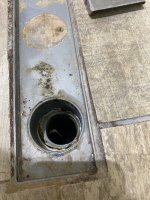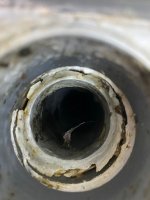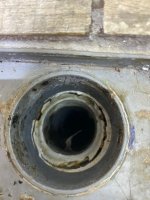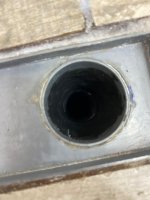Jonathan Puentes
New Member
Hi guys,
I recently got a call from our downstairs neighbor that he found water dripping from one of our bathroom pipes.
I took a quick look at our shower drain and noticed that between the trap and the pipe there was a huge amount of rotten silicone. After removing it, i found that there are small cracks between the drain trap and the pipe, it looks like cracked white grouting to me,
I talked with the previous contractor and he advised to use grouting to re-seal the area around the pipe/drain to avoid leakages. However, our building management is suggesting for me to fully remove the tiles, change the pipe and add a compression seal between the pipe and shower drain? We don't have a bathtub, we have a glass divider and shower on the tiles. (if that makes sense).
The leakage is quite small but it happens every time we take a shower. As you can see in the pic, the gap is obvious but if i try to move the pipe for any further cracks, it's quite solid and not shaky.
From what i heard, grouting is not waterproof and will eventually leak again, would you suggest something different? Epoxy or PVC cement?
Thanks for helping me!
I recently got a call from our downstairs neighbor that he found water dripping from one of our bathroom pipes.
I took a quick look at our shower drain and noticed that between the trap and the pipe there was a huge amount of rotten silicone. After removing it, i found that there are small cracks between the drain trap and the pipe, it looks like cracked white grouting to me,
I talked with the previous contractor and he advised to use grouting to re-seal the area around the pipe/drain to avoid leakages. However, our building management is suggesting for me to fully remove the tiles, change the pipe and add a compression seal between the pipe and shower drain? We don't have a bathtub, we have a glass divider and shower on the tiles. (if that makes sense).
The leakage is quite small but it happens every time we take a shower. As you can see in the pic, the gap is obvious but if i try to move the pipe for any further cracks, it's quite solid and not shaky.
From what i heard, grouting is not waterproof and will eventually leak again, would you suggest something different? Epoxy or PVC cement?
Thanks for helping me!




